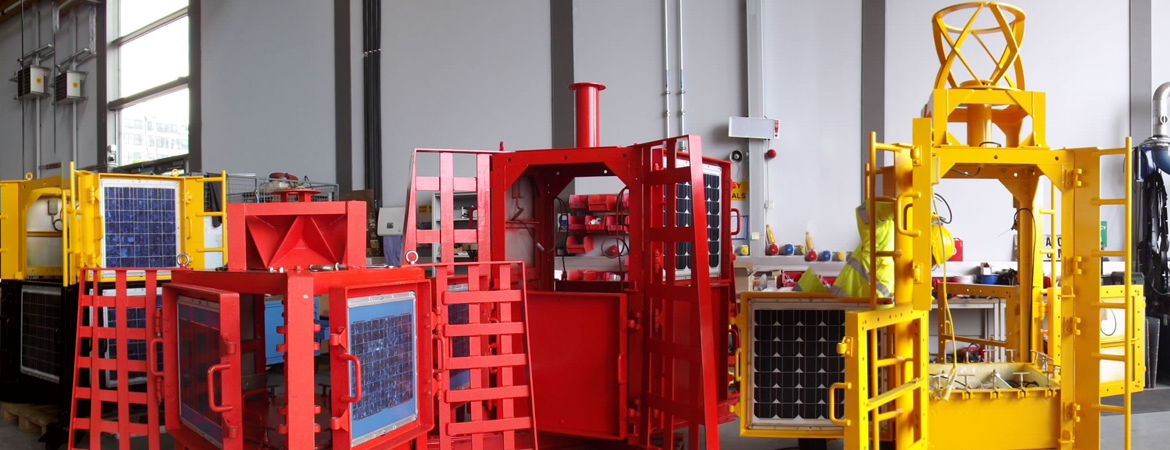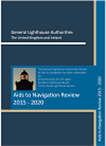- Mix of radio and visual aids to navigation will provide for the safety of all mariners
- Key aids will provide live wind and sea conditions
- Formal Aids to Navigation Review takes place every 5 years
The General Lighthouse Authorities for the UK and Ireland have now completed their latest 5 yearly comprehensive review of Aids to Navigation (AtoN) requirements for the waters around Ireland and the United Kingdom. User Feedback, Automatic Identification System (AIS) traffic analysis, Targeted User Consultation, Navigational Significance Assessments, Risk Assessments and Peer Review were all used to help define ongoing User Requirements.
The following principles were applied during the review process to ensure consistency:
- Generally having one light in view is acceptable
- Generally a max range of 18 Nautical Miles is considered sufficient for most lights
- If practical there can be a reduction in amount and diversity of flash characters on lighthouse lights
- Leading Lights remain important
- Sectored Lights remain important
- Synchronised and Sequential Buoy lights can be used more
The decisions were made following consultation with users and representative organization’s across the whole spectrum of the industry from large SOLAS vessels to leisure users and the fishing sector.
A summary of the changes that Irish Lights will make is as follows:
- Establish RACON at the Foyle Buoy due to increased large vessel traffic
- Open negotiations to upgrade to general AtoN status’ Bloody Foreland Light as analysis has shown General Traffic is transiting the area
- Disestablish the Pollock Buoy as the Power South Cardinal has made this Buoy redundant
- Replace the Briggs Port Hand Buoy with a North Cardinal Buoy to provide a clearer indication of the position of the danger
- Establish a Buoy in place of the Unlit Carrigavadra Beacon
- Sequence Buoyage at the entrance to Rosslare
Capt. Harry McClenahan Navigation Manager at Irish Lights said “The rate of technological changes in navigation support systems and materials has had a significant and positive effect on the services that Irish Lights provides to the Mariner, allowing for higher performance yet lower power demands from our stations. We are in the embryonic phase of the evolution of digital systems which are already starting to shape the future of marine navigation and communications. To ensure that safety of persons and property and environmental protection remain as the main focus for future navigation services we use our resources, experience and competency to explore and trial new systems and materials.”
The 2015 Aids to Navigation Review was launched yesterday at the Joint Users Consultative Group Meeting in Trinity House London. The changes will be phased in over the coming years and will be fully promulgated in advance by Notice to Mariners. The full document is available on the Irish Lights website as follows:
07/05/2015
ENDS
For further information contact:
Capt. Harry McClenahan
Commissioners of Irish Lights
086 8201435
Notes to the Editor
About The Commissioners of Irish Lights
Irish Lights is a modern Maritime Safety Organisation whose mission is to ‘provide aids to navigation and allied services for the safety of persons and infrastructure at sea, while also helping protect the marine environment and supporting the marine industry and coastal communities’. While Irish Lights can date its establishment to a 1786 Act of Parliament, the organisation has always prided itself in its innovative and efficient service delivery. Today, the organisation remains committed to the efficient, effective sustainable delivery of services as it exploits new technology and new commercial opportunities.
Irish Lights is based in Dun Laoghaire, Co. Dublin. Irish Lights are responsible for providing marine aids to navigation (AtoN) under the Safety of Life at Sea (SOLAS) convention.
- Irish Lights provide and maintain over 300 general aids to navigation
- Irish Lights manage 4,000 local aids to navigation
- Irish Lights mark or remove dangerous wrecks outside harbour areas around Ireland
Irish Lights AtoN include radio aids such as Differential GPS (DGPS), Radar Beacons (Racon), and Automatic Identification Systems (AIS), as well as traditional visual aids such as lighthouses, buoys and beacons. These AtoN complement Global Navigation Satellite Systems (GNSS), such as GPS, which are the primary means of navigation for most mariners. If satellites are not available, these AtoN provide position, spatial awareness, hazard marking and backup.
Please visit www.cil.ie for further information.



